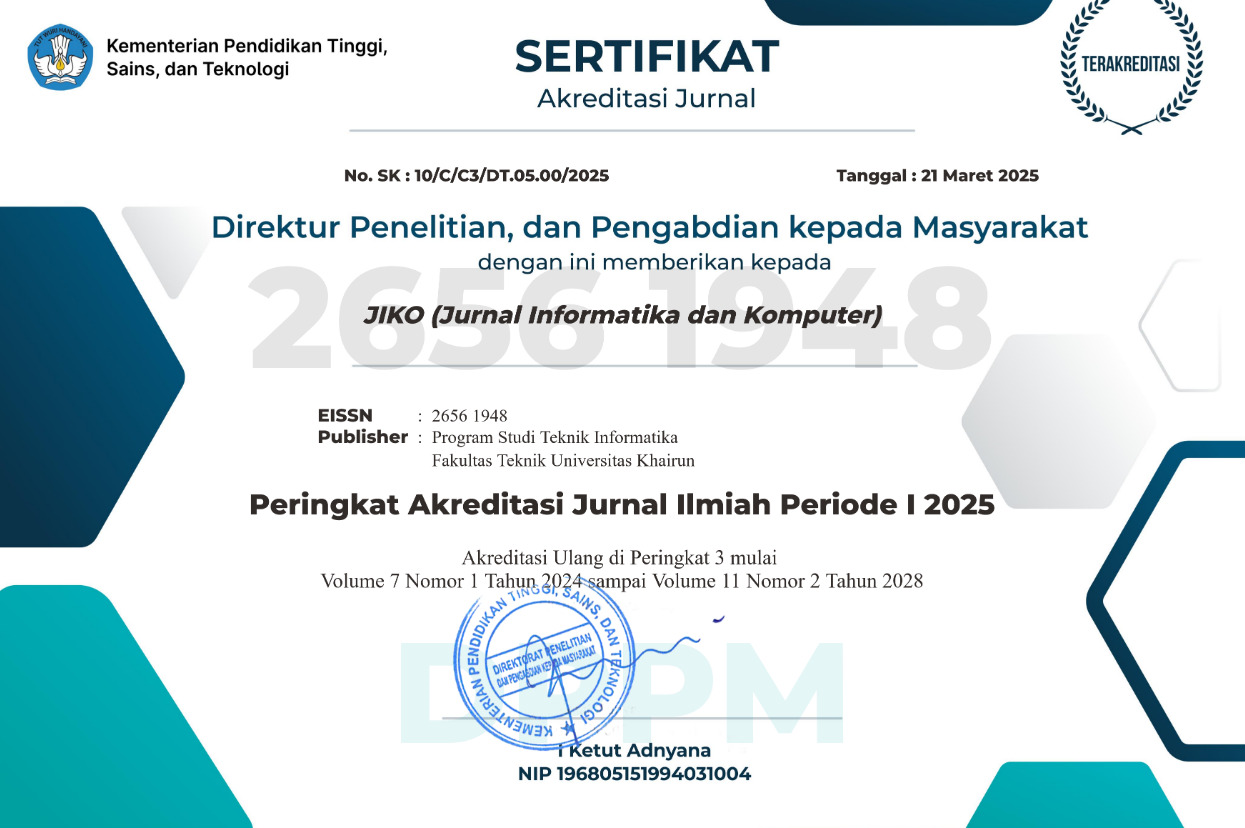BRAIN TUMOR DETECTION FROM MRI IMAGES USING DISCRETE COSINE TRANSFORM FEATURES AND EXTREME LEARNING MACHINE
Abstract
Full Text:
PDFReferences
T. Sinha, “Tumors: Benign and Malignant,†Cancer Ther Oncol Int J, vol. 10, no. 3, pp. 1–3, 2018, doi: 10.19080/ctoij.2018.10.555790.
SEER, “Surveillance, Epidemiology, and End Results Program.†[Online]. Available: https://seer.cancer.gov/
S. A. H. S. Javadi and B. Rezaei, “Brain tumors and indications for brain imaging in patients with psychiatric manifestations: a case report,†Middle East Current Psychiatry, vol. 28, no. 1, pp. 0–4, 2021, doi: 10.1186/s43045-021-00136-2.
R. H. Ramdlon, E. M. Kusumaningtyas, and T. Karlita, “Brain Tumor Classification Using MRI Images with K-Nearest Neighbor Method,†IES 2019 - International Electronics Symposium: The Role of Techno-Intelligence in Creating an Open Energy System Towards Energy Democracy, Proceedings, pp. 660–667, 2019, doi: 10.1109/ELECSYM.2019.8901560.
G. Cinarere and B. G. Emiroglu, “Classificatin of Brain Tumors by Machine Learning Algorithms,†2019.
Y. Bhanotu, A. Kamalakannan, and G. Rajamainickam, “Detection and Classification of Brain Tumor in MRI Images using Deep Convolutional Network.â€Â
M. A. Naser and M. J. Deen, “Brain tumor segmentation and grading of lower-grade glioma using deep learning in MRI images,†Comput Biol Med, vol. 121, Jun. 2020, doi: 10.1016/j.compbiomed.2020.103758.
“Kaggle.†[Online]. Available: https://www.kaggle.com/datasets
S. Y. Prasetyo, G. Z. Nabiilah, and Z. Nabila Izdihar, 2022“Age Estimation from Face Image using Discrete Cosine Transform Feature and Artificial Neural Network,â€Â.
Rubbina, P. Verma, and G. Verma, 2008. “Brain Tumor Detection using Hybrid Model of DCT DWT and Thresholding,†Certified Journal | Page, vol. 9001.
H. O. Dominguez and K. R. Rao, Discrete Cosine Transform; Second Edition. Boca Raton: CRC Press, 2019.
J. Wang, S. Lu, S. H. Wang, and Y. D. Zhang, “A review on extreme learning machine,†Multimed Tools Appl, 2021, doi: 10.1007/s11042-021-11007-7.
S. Ding, X. Xu, and R. Nie, “Extreme learning machine and its applications,†Neural Computing and Applications, vol. 25, no. 3–4. pp. 549–556, 2014. doi: 10.1007/s00521-013-1522-8.
P. P. Widodo and R. T. Handayanto, Penerapan Soft Computing dengan Matlab : Edisi Revisi. Banding: Rekayasa Sains, 2012.
W. Budiharto and D. Suhartono, Artificial Intelligence Konsep dan Penerapannya. Yogyakarta: Penerbit Andi, 2014.
I. Robandi, Artificial Intelligence : Mengupas Rekayasa Kecerdasan Tiruan. Yogyakarta: Penerbit Andi, 2019.
D. M. W. Powers and Ailab, “EVALUATION: FROM PRECISION, RECALL AND F-MEASURE TO ROC, INFORMEDNESS, MARKEDNESS & CORRELATION,†2020.
S. Y. Prasetyo, “SARS-CoV-2 Detection From Lung CT-scan Images Using Fine Tuning Concept on Deep-CNN Pretrained Model,†CESS (Journal of Computing Engineering, System and Science), vol. 8, no. 1, pp. 101–112, 2023, [Online]. Available: www.jurnal.unimed.ac.id
M. Hudha, E. Supriyati, and T. Listyorini, “ANALISIS SENTIMEN PENGGUNA YOUTUBE TERHADAP TAYANGAN #MATANAJWAMENANTITERAWAN DENGAN METODE NAÃÂVE BAYES CLASSIFIER,†Jurnal Informatika dan Komputer) Akreditasi KEMENRISTEKDIKTI, vol. 5, no. 1, pp. 2614–8897, 2022, doi: 10.33387/jiko.
DOI: https://doi.org/10.33387/jiko.v6i1.5230
Refbacks
- There are currently no refbacks.












